#Colegiata y Claustro de Santa Juliana
Photo

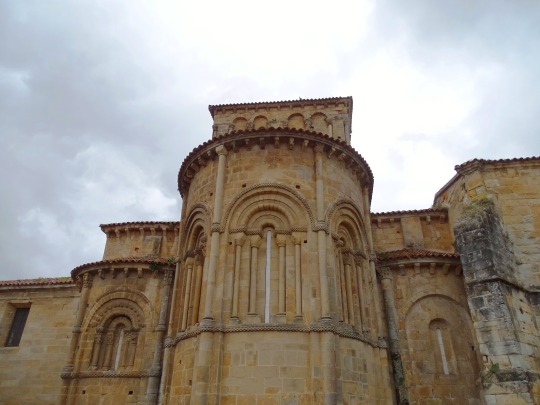
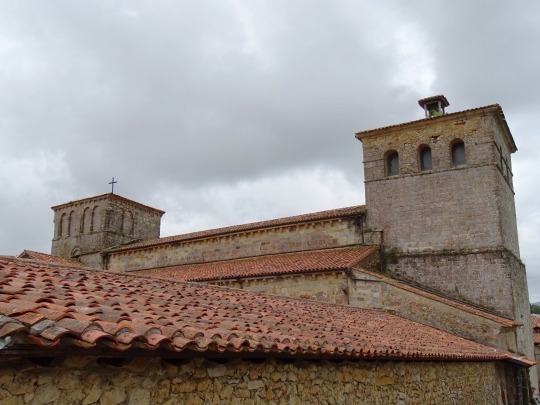



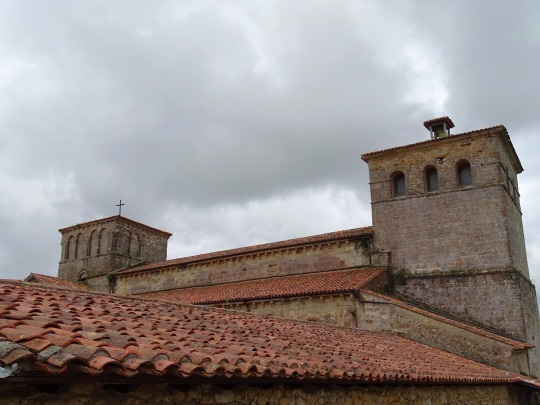
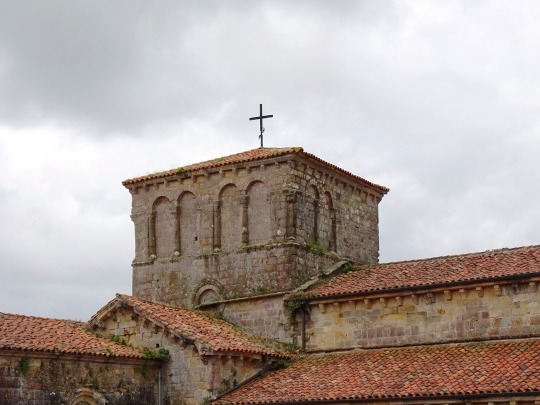
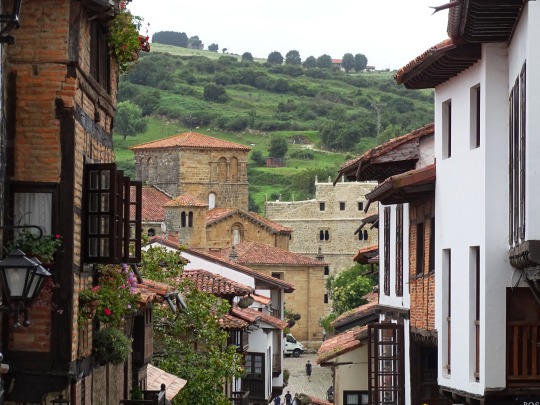
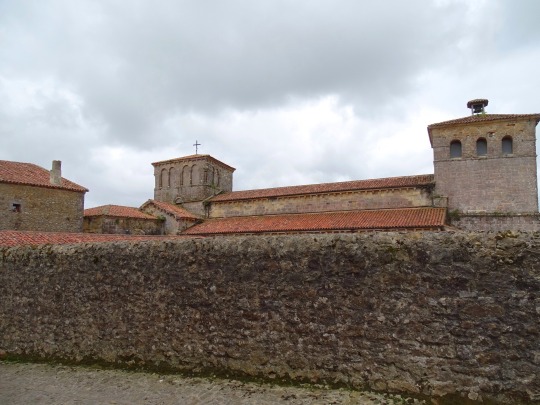
Collegiate Church of St Juliana, Santillana del Mar (No. 2)
The construction scheme responds to that of a church with three naves of four sections and transept, three semicircular apses, a cylindrical tower, and dome over the transept. The set is completed with a cloister and the abbey dependencies. The central nave is wider than the lateral ones and equal to that of the transept, so the transept has a square plan. The arms of the transept do not protrude from the side walls, so that they are not visible to the outside. The heads of the three naves are made up of staggered semicircular apses. At the foot of the main nave stood a square bell tower that on the outside is similar to the one that stands over the transept, giving an image of symmetry to those who observe the church from the southern façade.
In the formal and decorative aspect we must mention the existence of an open main portal on the south side that allows access from the square, and another on the north wall that connects the church with the cloister. As a finish of the first, a triangular pediment with a Renaissance air was arranged in later times, replacing the original Romanesque eaves on corbels; shows a niche containing the image of Saint Juliana in an attitude of subduing the devil. Nor is the gallery of fifteen arches that runs through the upper part of the southern canvas original. The flaring of the façade is formed by smooth adoveled archivolts; Above are aligned a series of quite deteriorated human figures, highlighting in the center a mandorla supported by four angels in which a seated pantocrator is framed.
The covering of the naves is carried out by ribbed vaults, and that of the arms of the transept by barrel vaults; The apses are roofed with oven vaults. Above the transept stands a dome in the form of a square tower inside which, at a lower level than the roof, there is a decentered dome that rests on pendentives.
An element of special interest is the cloister attached in the late twelfth and early thirteenth centuries to the north wall of the church. In a first phase the south wing and a part of the west wing would be raised; already in the thirteenth century this wing would be completed and the north wing would be built. The east side is from later times (sixteenth century) and does not follow the guidelines of the Romanesque style.
The primitive galleries are formed by semicircular arches supported by paired or quadruple columns. In total it has 43 capitals of which the oldest, those on the south side and first section on the west side, are historians with carvings of appreciable merit, while the most recent ones present plant themes.
Source: Wikipedia
#Collegiate Church of St Juliana#Colegiata y Claustro de Santa Juliana#Spain#Romanesque architecture#Santillana del Mar#Casco Histórico de Santillana del Mar#Town of Three Lies#Cantabria#España#Torrelavega#summer 2021#pedestrian zone#old town#cityscape#small town#cobblestone#tourist attraction#landmark#Southern Europe#Northern Spain#alley#original photography
16 notes
·
View notes
Text
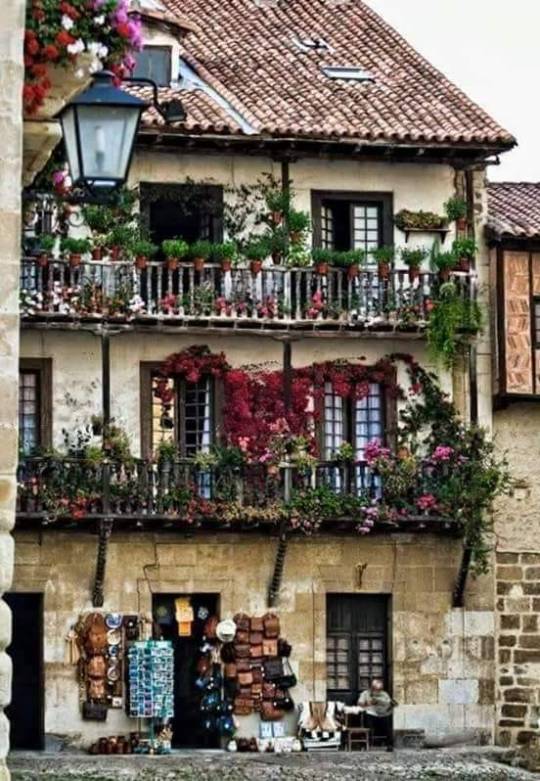
Santillana del mar , Cantabria, España.
Sin lugar a dudas una de las localidades de
mayor valor histórico-artístico de España, hasta el punto de que todo en ella es monumento.
Conocida como "la villa de las tres mentiras", pues ni es "santa", ni "llana", ni tiene "mar", Santillana del Mar es la capital de un municipio de 4.000 habitantes dedicados en su mayoría a la actividad agropecuaria y, sobre todo, al turismo.
Hablar de Santillana del Mar es hacerlo también de la Cueva de Altamira. Calificada como la "capilla sixtina" del arte rupestre, esta cueva contiene probablemente las pinturas prehistóricas más famosas del mundo. El descubrimiento de la cueva de Altamira, a finales del siglo XIX, provocó una honda polémica y posterior conmoción entre la comunidad científica de la época, reacia en un principio a admitir la antigüedad real de sus pinturas (14.000 años). La cueva fue hallada por casualidad en 1.868 por Modesto Cubillas, a través de quien llegó al conocimiento de su primer gran impulsor: Marcelino Sanz de Sautuola. La parte más famosa de la cueva, conocida como la "sala de los polícromos", no fue descubierta sin embargo hasta 1.879, en el transcurso de una visita en la que Sanz de Sautuola iba acompañado por su hija María.
Durante el siglo posterior a su descubrimiento, la masiva afluencia de visitantes a la cueva comenzó a inquietar a los científicos ante un posible deterioro de las pinturas. Esto provocó en 1979 el cierre de la cueva de Altamira, primero total y después controlado en aras a preservar su valioso contenido. Debido a la fragilidad del arte rupestre de Altamira, se crea una réplica de la cueva para deleite de los visitantes en 2001. En este año se inaugura también la actual sede del museo, la cual alberga la Neocueva, una reproducción que permite la difusión del arte de Altamira a todos los públicos.
Pero aunque parte fundamental, Santillana del Mar es mucho más que la Cueva de Altamira. Ya en el siglo IX existía en la villa el Monasterio de Santa Juliana, que daría paso a la prestigiosa colegiata de Santa Juliana en el siglo XII, el primero y más importante de los exponentes del arte románico en Cantabria. En torno a la colegiata y su bello claustro, de finales del XII-principios del XIII, se desarrolló un núcleo de población que vivió épocas de gran esplendor económico, como evidencia la riqueza de las numerosas casonas y palacios que conforman esta villa.
2 notes
·
View notes
Text
La Colegiata de Santillana del Mar en 1919


Fachada principal de La Colegiata

La hoy conocida como Colegiata de Santa Juliana tiene su origen en la expansión del antiguo monasterio del mismo nombre, a mediados del siglo XII. Fue construido por un grupo de monjes para contribuir a la repoblación de la zona y crear una pequeña ermita en la que exponer las reliquias de la mártir Juliana, que traían consigo. Por aquel entonces la aldea toma el nombre del monasterio: “Sancta luliana”, que declinó en la actual Santillana.
Hoy en día no se conservan restos del monasterio primitivo. Se supone que era una sencilla construcción de piedra con ábside rectangular y cubierta de madera, a semejanza de otras edificaciones visigóticas o mozárabes. De la estructura actual destaca la iglesia, de estilo románico influenciada por las corrientes del sur, a partir del paso del Camino de Santiago por las provincias de Burgos y Palencia. Su fachada principal se encuentra orientada al sur y precedida de un amplio atrio, cuenta con un arco de medio punto rodeado de arquivoltas con un friso que representa al Pantocrator y una hornacina con la imagen de Santa Juliana en el friso. Sus capiteles reflejan una gran variedad de motivos florales y figurados, ambos representativos de la iconografía románica.
El claustro se encuentra situado en la fachada norte del conjunto y sus capiteles muestran los principales elementos decorativos utilizados en la época, florales, geométricos y figurados. Predominan los arcos sobre dobles columnas, aunque también se encuentran pilares de cuatro columnas, que hacen las funciones de separadores de temas. Entre los temas representados se encuentran escenas del Antiguo y del Nuevo Testamento.
Cabe destacar su retablo mayor, realizado entre finales del siglo XV y comienzos del siglo XVI y que mezcla elementos del gótico flamígero y del plateresco.
Read the full article
0 notes
Photo

Maravillosos siempre, estos capiteles se conservan relativamente bien gracias a que están más protegidos del agua y sobre todo del aire. #art #sculpture #abbey #monastery #monasterio #church #iglesia #religion #architecture #arquitectura #ancient #old #history #culturalheritage #humanheritage #heritage #medieval #travel #viajar #igersspain #spain #españa #cantabria (en Colegiata y Claustro de Santa Juliana) https://www.instagram.com/p/BrKmociFCLZ/?utm_source=ig_tumblr_share&igshid=1wdyi2bl690s9
#art#sculpture#abbey#monastery#monasterio#church#iglesia#religion#architecture#arquitectura#ancient#old#history#culturalheritage#humanheritage#heritage#medieval#travel#viajar#igersspain#spain#españa#cantabria
0 notes
Photo

De excursión por Santillana (1): Colegiata de Santa Juliana #aquíarriba #santillanadelmar #lastresmentiras #colegiata #claustro #santajuliana (en Colegiata y Claustro de Santa Juliana)
0 notes
Photo

: Our own chapel 📷: @78_adri _________ #llesbacycleworks #steelisreal #cyclinglife #outsideisfree #fromwhereiride #classics #cobbles #eTapHRD #rapha #shareyourkask #giroempirevr90 (en Colegiata y Claustro de Santa Juliana)
#outsideisfree#cobbles#rapha#steelisreal#shareyourkask#llesbacycleworks#cyclinglife#giroempirevr90#fromwhereiride#etaphrd#classics
0 notes
Photo
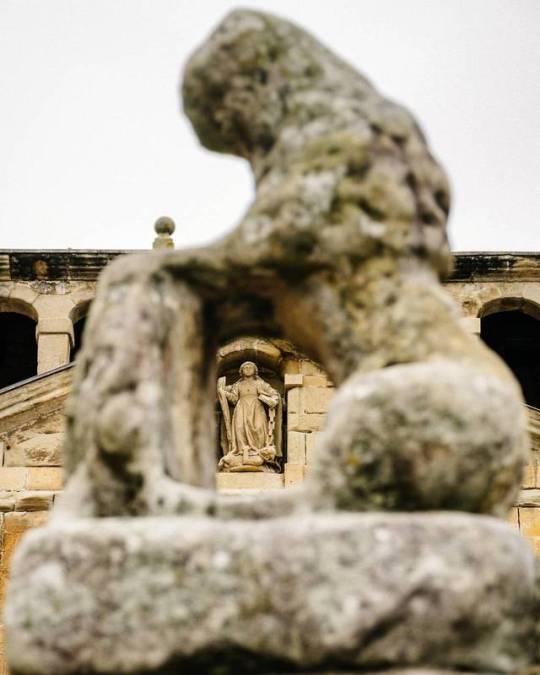
Colegiata #santillanadelmar #Cantabria #colegiata #Collegiatechurch #church #iglesia #Fujixt10 #xf1655mmf28 #ago2017 (en Colegiata y Claustro de Santa Juliana)
0 notes
Video
youtube
Places to see in ( Santillana del Mar - Spain ) Santillana del Mar is a historic town situated in Cantabria, Spain. Santillana del Mar many historic buildings attract thousands of holidaymakers every year. The protagonist of the novel Gil Blas is born in Santillana. In his philosophical novel "La Nausée", Sartre described Santillana as the prettiest village in Spain ("le plus joli village d'Espagne"). There is an old saying that Santillana del Mar is The Town of Three Lies, since it is neither a Saint (Santo), nor flat (llana), nor is it by the sea (Mar) as implied by its name. However, the name actually derives from Santa Juliana (or Santa Illana) whose remains are kept in the Colegiata, a Romanesque church and former Benedictine monastery. The UNESCO World Heritage site Cave of Altamira is nearby. Alot to see in ( Santillana del Mar - Spain ) such as : Cave of Altamira National Museum and Research Center of Altamira Cave of Altamira and Paleolithic Cave Art of Northern Spain Colegiata y Claustro de Santa Juliana Museo de la tortura - Inquisicion Museo Y Fundación Jesús Otero Palacio de Los Velarde Torre del Merino Casa del Águila y la Parra Museo del Barquillero Casa de Los Villa Torre de Los Velarde El Museo Del Queso Plaza Mayor de Ramon y Pelayo Collegiate Church of Santillana del Mar Museo de Altamira Museo de la Inquisicion Ermita de Santa Justa Calle de Juan Infante Zoo de Santillana Museo del Barquillero Calle de Santo Domingo Museo y Fundacion Jesus Otero ( Santillana del Mar - Spain ) is well know as a tourist destination because of the variety of places you can enjoy while you are visiting the city of Santillana del Mar . Through a series of videos we will try to show you recommended places to visit in Santillana del Mar - Spain Join us for more : https://www.youtube.com/channel/UCLP2J3yzHO9rZDyzie5Y5Og http://ift.tt/2drFR54 http://ift.tt/2cZihu3 http://ift.tt/2drG48C https://twitter.com/Placestoseein1 http://ift.tt/2cZizAU http://ift.tt/2duaBPE
0 notes
Photo


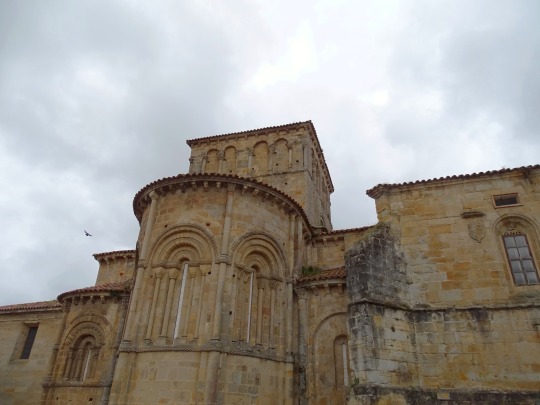

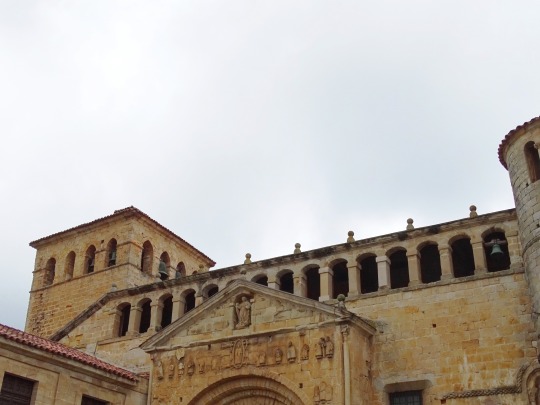

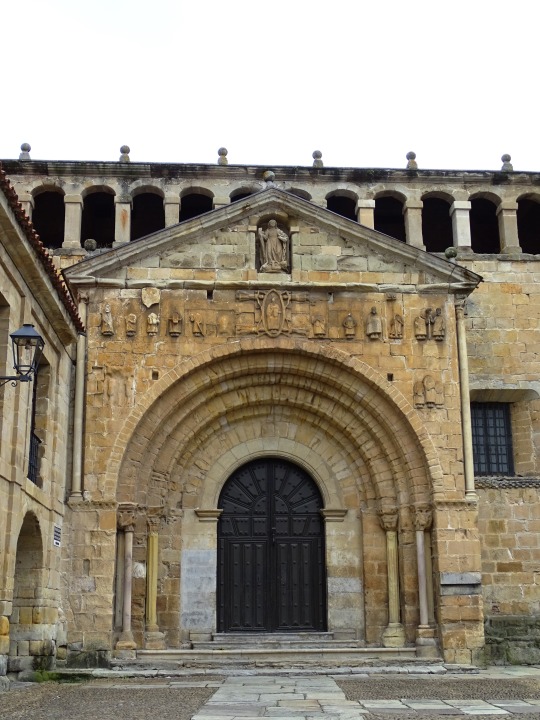


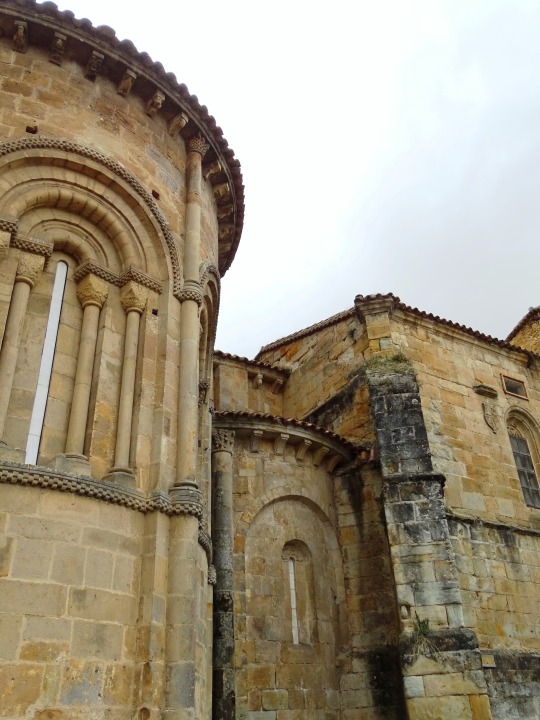
Collegiate church of St Juliana, Santillana del Mar (No. 1)
The collegiate church of Santa Juliana de Santillana del Mar (Cantabria, Spain), to which this Cantabrian town (Sant Iuliana-Santillana) owes its name, is one of the most representative Romanesque monuments of the region. It was declared a National Monument of Spain on March 12, 1889.
In 2015, in the approval by UNESCO of the extension of the Camino de Santiago in Spain to "Caminos de Santiago de Compostela: French Way and Roads of Northern Spain", it was included as one of the individual assets (ref. no. 669bis-012) of the coastal way.
Supposedly the young Juliana of Nicomedia was martyred in Asia Minor (today Turkey) during the persecutions undertaken by Emperor Diocletian at the end of the third century, and her remains brought in the ninth century to this place of the Kingdom of Asturias by some pilgrim monks. At the time of the King of Asturias Alfonso III (documents place it in 870) a hermitage was built under the invocation of the saint where to guard and venerate her relics, and then a monastery that prospered under the protection of the local nobility. It was King Ferdinand I of Castile, in 1045, who gave him the definitive impulse by granting important privileges, one of which was to put under the sovereignty of his abbot the town and its possessions.
The primitive temple was replaced in Romanesque times by which, with various additions and reforms, has been preserved until today, dating from the twelfth century. In its origins it constituted a Benedictine monastery, but in the eleventh century it acquired the rank of collegiate church governed by a community of canons of San Agustín. From then on, backed by noble aid, it became the most important temple in Cantabria.
Source: Wikipedia
#Antigua Casa de los Abades#Collegiate church and cloister of St Juliana#travel#Colegiata y Claustro de Santa Juliana#Romanesque architecture#Cantabria#Collegiate church of St Juliana#Torrelavega#Santillana del Mar#vacation#Casco Histórico de Santillana del Mar#architecture#cityscape#summer 2021#Town of Three Lies#details#bell#tourist attraction#landmark#cobblestone#pedestrian zone#Northern Spain#Southern Europe#España#Spain
5 notes
·
View notes
Photo
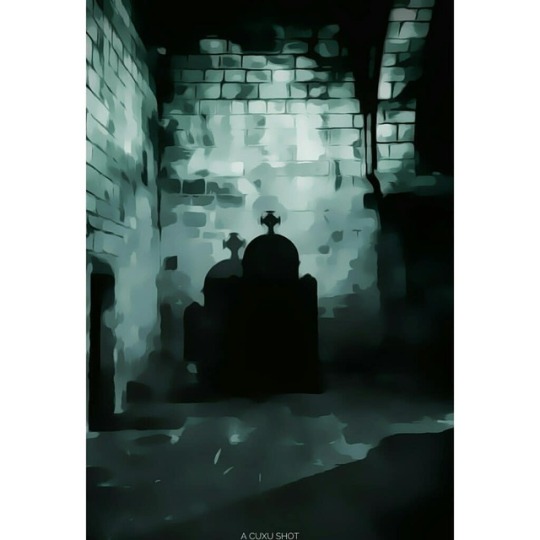
No llevaba trípode y como es normal, la iluminación del templo era escasa. Obviamente no iba a tirar de flash, quitaría por ley el flash a las cámaras de fotos y teléfonos, por lo que me quedaba abusar de la ISO y eso conlleva, en lugares como este, una carga de ruido insufrible, al menos para mis ojos. Así que como foto no me sirve, pero como base para editarla artísticamente... es genial, al menos a mi me encanta. #artfilters #photoart #creepy #monotone #creepyart #coldcolors #art #church #iglesia #confession #igersspain #spain #españa #cantabria (en Colegiata y Claustro de Santa Juliana) https://www.instagram.com/p/BrKl6Vxl2F9/?utm_source=ig_tumblr_share&igshid=120aah94g2pne
#artfilters#photoart#creepy#monotone#creepyart#coldcolors#art#church#iglesia#confession#igersspain#spain#españa#cantabria
0 notes
Photo
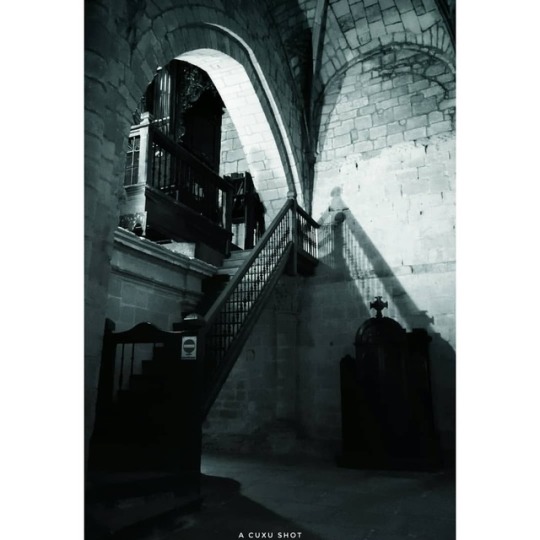
Perturbadora visión de un lugar de paz y amor... A mi desde siempre me han dado mucho... miedo, iba a decir respeto, pero el respeto es otra cosa, que también tengo obviamente, me apasionan, pero eso no quita que, jamás podría dormir dentro de un lugar así 😂😱 #bnw #byn #blackandwhite #monochrome #monotone #bnwlovers #oldstyle #instablack #abbey #monastery #monasterio #church #iglesia #religion #architecture #arquitectura #ancient #old #history #culturalheritage #humanheritage #heritage #medieval #travel #viajar #igersspain #spain #españa #cantabria (en Colegiata y Claustro de Santa Juliana) https://www.instagram.com/p/BrKj8p4lDzU/?utm_source=ig_tumblr_share&igshid=1eobb8d0wsfxq
#bnw#byn#blackandwhite#monochrome#monotone#bnwlovers#oldstyle#instablack#abbey#monastery#monasterio#church#iglesia#religion#architecture#arquitectura#ancient#old#history#culturalheritage#humanheritage#heritage#medieval#travel#viajar#igersspain#spain#españa#cantabria
0 notes
Photo

Un lugar al que los años le han otorgado esa belleza extrema que solo con muchísimo tiempo se consigue 😍 #abbey #monastery #monasterio #church #iglesia #religion #architecture #arquitectura #ancient #old #history #culturalheritage #humanheritage #heritage #medieval #travel #viajar #igersspain #spain #españa (en Colegiata y Claustro de Santa Juliana) https://www.instagram.com/p/BrKix52FJfg/?utm_source=ig_tumblr_share&igshid=1xq3fybd5iycs
#abbey#monastery#monasterio#church#iglesia#religion#architecture#arquitectura#ancient#old#history#culturalheritage#humanheritage#heritage#medieval#travel#viajar#igersspain#spain#españa
0 notes
Photo

Lo que hoy son bonitos huecos por donde hacer juegos con la luz, ayer era el sistema de iluminación que tenían los monjes. #bnw #byn #blackandwhite #monochrome #monotone #bnwlovers #oldstyle #instablack #abbey #monastery #monasterio #church #iglesia #religion #architecture #arquitectura #ancient #old #history #culturalheritage #humanheritage #heritage #medieval #travel #viajar #igersspain #spain #españa #cantabria (en Colegiata y Claustro de Santa Juliana) https://www.instagram.com/p/BrKiaIwF4KF/?utm_source=ig_tumblr_share&igshid=9uhoc5nm8iqh
#bnw#byn#blackandwhite#monochrome#monotone#bnwlovers#oldstyle#instablack#abbey#monastery#monasterio#church#iglesia#religion#architecture#arquitectura#ancient#old#history#culturalheritage#humanheritage#heritage#medieval#travel#viajar#igersspain#spain#españa#cantabria
0 notes
Photo

Perspectiva y monocromo suelen ser buenos aliados 😉 #bnw #byn #blackandwhite #monochrome #bnwlovers #oldstyle #instablack #dark #noir #perspective #vanishingpoint #travel #viajar #igersspain #spain #españa #cantabria (en Colegiata y Claustro de Santa Juliana) https://www.instagram.com/p/BrJMbEpFe87/?utm_source=ig_tumblr_share&igshid=e7zgfcfy3tyc
#bnw#byn#blackandwhite#monochrome#bnwlovers#oldstyle#instablack#dark#noir#perspective#vanishingpoint#travel#viajar#igersspain#spain#españa#cantabria
0 notes
Photo

Digamos que las iglesias evolucionan como los pokemon. No todas y no siempre siguen un orden pero, es común que una ermita se convierta en iglesia o monasterio y este luego pase a colegiata e incluso algunos llegan evolucionar en catedral 😮 Cómo dije esto es, una vaga e imprecisa, pero divertida explicación 😆 Esa torre circular es muy típica de los templos románicos, eso sí es exacto 😆 #bnw #byn #abbey #monastery #monasterio #church #iglesia #religion #architecture #arquitectura #ancient #old #history #culturalheritage #humanheritage #heritage #medieval #travel #viajar #igersspain #spain #españa #cantabria (en Colegiata y Claustro de Santa Juliana) https://www.instagram.com/p/BrJMK6glwgw/?utm_source=ig_tumblr_share&igshid=1ok2rk6kjh208
#bnw#byn#abbey#monastery#monasterio#church#iglesia#religion#architecture#arquitectura#ancient#old#history#culturalheritage#humanheritage#heritage#medieval#travel#viajar#igersspain#spain#españa#cantabria
0 notes
